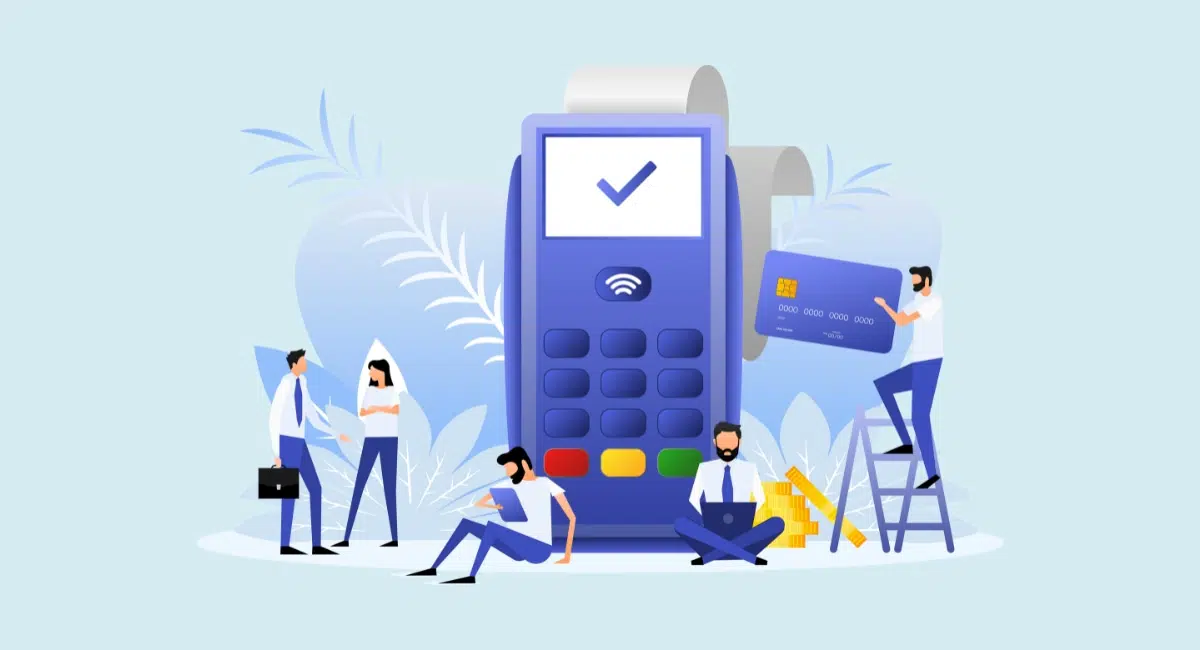It’s important for merchants to know about the fees for card payments, also known as ‘merchants fees’.
Accepting debit and credit cards always has a cost due to the processes and technologies involved. The costs vary according to the EFTPOS provider, payment solution, size of business, type of card and more, so understanding merchant fees requires a view of the broader context.
Let’s start with a basic description of merchant charges and compare the factors that make them vary.
Merchant fees defined
Merchant fees are the charges merchants pay per card transaction accepted.
Payment companies may call them transaction fee, merchant service fee or card processing fee, and the term may only describe one fee out of a whole pricing structure.
The pricing structure of a merchant’s fees varies greatly and depends on the following:
- Sales channel (EFTPOS machine, online, over-the-phone)
- Payment provider or card processor
- Size, type and risk category of your business
- Transaction volume, typical transaction size and sales history
- Type, card network and country of issue of the card accepted
Some payment companies don’t distinguish between these things, instead opting for a fixed rate for all transactions. But behind it is still a true cost of accepting cards consisting of several small fees.
eftpos fees are the lowest
The national debit card system in Australia, eftpos, has long been the cheapest and most recommended card payment option in Australia. It uses a domestic banking network to process its cards, so costs less than international card networks like Visa and American Express.
On average, in-store eftpos card payments cost around 0.3% of the transaction value. For comparison, Visa and Mastercard transactions cost 0.5%-0.9% while other card networks have an average cost of 1.3%-1.9% (RBA figures).
In many cases, eftpos merchant fees are just a fixed fee instead of a % rate, whereas other card schemes normally incur a percentage. If the eftpos fee is fixed like 25¢, it works out cheaper for large transaction values. For small transaction values like $2, a fixed fee would make a high proportion of the transaction.
Visa and Mastercard fees usually low, but not always
Transaction charges differ between card schemes/networks (Mastercard, Amex, JCB, etc.) and types of cards (debit, credit, commercial, personal, etc.).
As a result, payment providers usually offer different percentage rates – sometimes with a fixed fee added – for different cards.
Publicised charges may or may not include GST, so make sure you know the full cost including any applicable GST.
General fee differences between cards:
- Visa and Mastercard have lower fees than American Express, Diners Club, Discover, JCB and UnionPay
- Debit cards have lower fees than credit cards
- Premium, business and corporate cards have the highest fees
- Foreign-issued cards have higher or more fees than domestic cards
In Australia, a few exceptions without variable fees include Square and Zeller. Their EFTPOS machines have a fixed fee for all cards.
Blended vs interchange plus plus fees
Card types aside, what about the actual fee structure? Broadly speaking, there are two types of pricing: blended fees and interchange++ (interchange plus plus) fees.
Blended fees
Blended fees are the go-to option for small, new or low-volume businesses. They are on average higher, but simpler to understand with their single or few fixed rates for clearly defined cards.
For example, Zeller and Tyro charge a single fee of 1.4% for all contactless and chip payments.
Interchange++ fees
Interchange++ pricing best reflects the true cost of each transaction and consists of individual charges:
- Interchange rate – percentage rate for card issuer
- Scheme fees – base fee + payment technology fee for card scheme (Visa, Mastercard, etc.)
- Acquirer fee – fee for acquiring bank (Adyen, Fiserv, etc.)
- Merchant service charge – markup for payment provider (sometimes part of acquirer fee)
Here’s what that could look like for an Australian Visa consumer debit card:
0.2% (interchange) + 0.7¢ + 0.01% (scheme fees) + 0.6% (acquirer fee) + 0.30¢ (merchant service charge)
The card schemes (Visa, Mastercard) publish their interchange fees for full transparency.
Which is better?
To sum up, blended fees are simplified charges where the above interchange++ charges are ‘blended’ together to make fewer, more general rates.
Because interchange++ fees vary a lot and are therefore unpredictable from the merchant’s perspective, blended rates are often preferred by small businesses.
Interchange++ tends to be cheaper overall, but it’s usually only offered to larger merchants with a high enough monthly sales volume, like $20k+.
Online fees higher than EFTPOS rates
Merchant fees can refer to the cost of transactions in person, remotely or online.
EFTPOS machines process chip and contactless payments electronically; both very secure forms of card processing. The terminal essentially proves that the card is physically present, with the cardholder physically present. The lowered risk of fraud means banks and card networks charge less for EFTPOS transactions.
Online checkout screens on a phone or computer, on the other hand, require card details to be manually entered. To verify these ecommerce transactions, costly security procedures are enforced through an online payment gateway (such as Stripe’s), making merchant fees higher.
When merchants enter transactions in a virtual terminal on behalf of the cardholder (for example, when taking a deposit over the phone), the fees are even higher due to their increased risk.
Least-cost routing can save money
To encourage more competitive fees from Visa and Mastercard, the Reserve Bank of Australia (RBA) promotes least-cost routing (also called merchant-choice routing). This function automatically picks the cheapest card network when a dual-network debit card is processed.
Domestic debit cards in Australia are typically both an eftpos and Mastercard or Visa card (co-branded). Since eftpos fees tend to be lower, a merchant saves money by forcing a contactless debit card transaction to be processed via eftpos (the “least-cost” route) instead of Visa.
Least-cost routing only works for tap-and-go in an EFTPOS machine or online where eftpos is accepted. If the customer inserts a chip card in a terminal, they have the option to choose the Visa/Mastercard option instead.
The RBA is trying to promote uptake among Australian merchants for the system, but not all merchant service providers offer it as an option yet. You can usually activate it if your EFTPOS machine is from a bank, for example NAB or Westpac.
Surcharging a way to avoid fees
To save money, some Australian businesses add a surcharge to card transactions.
It allows businesses to avoid merchant fees, but not card machine rental and other related costs. And not all payment providers offer a surcharge function.
Requiring cardholders to absorb the merchant fees through surcharging is not necessarily a good thing. Customers can decide to go elsewhere, leaving you with a cancelled purchase.
And accepting cash (which many consider as “free”) is still an expense with the level of effort and risk involved in dealing with coins and banknotes.
Transaction fees not the only cost
Accepting cards comes with more costs than just transaction fees. These could be hidden or clearly advertised and include:
- EFTPOS terminal rental
- Monthly minimum service charge
- Settlement fee for bank account payouts
- PCI-DSS compliance costs
- Refund fee
- Chargeback fee
In addition, you may have to sign up for a merchant account contract of at least a year, depending on the solution. Exiting this early usually incurs an early cancellation charge that could be hundreds of dollars.




